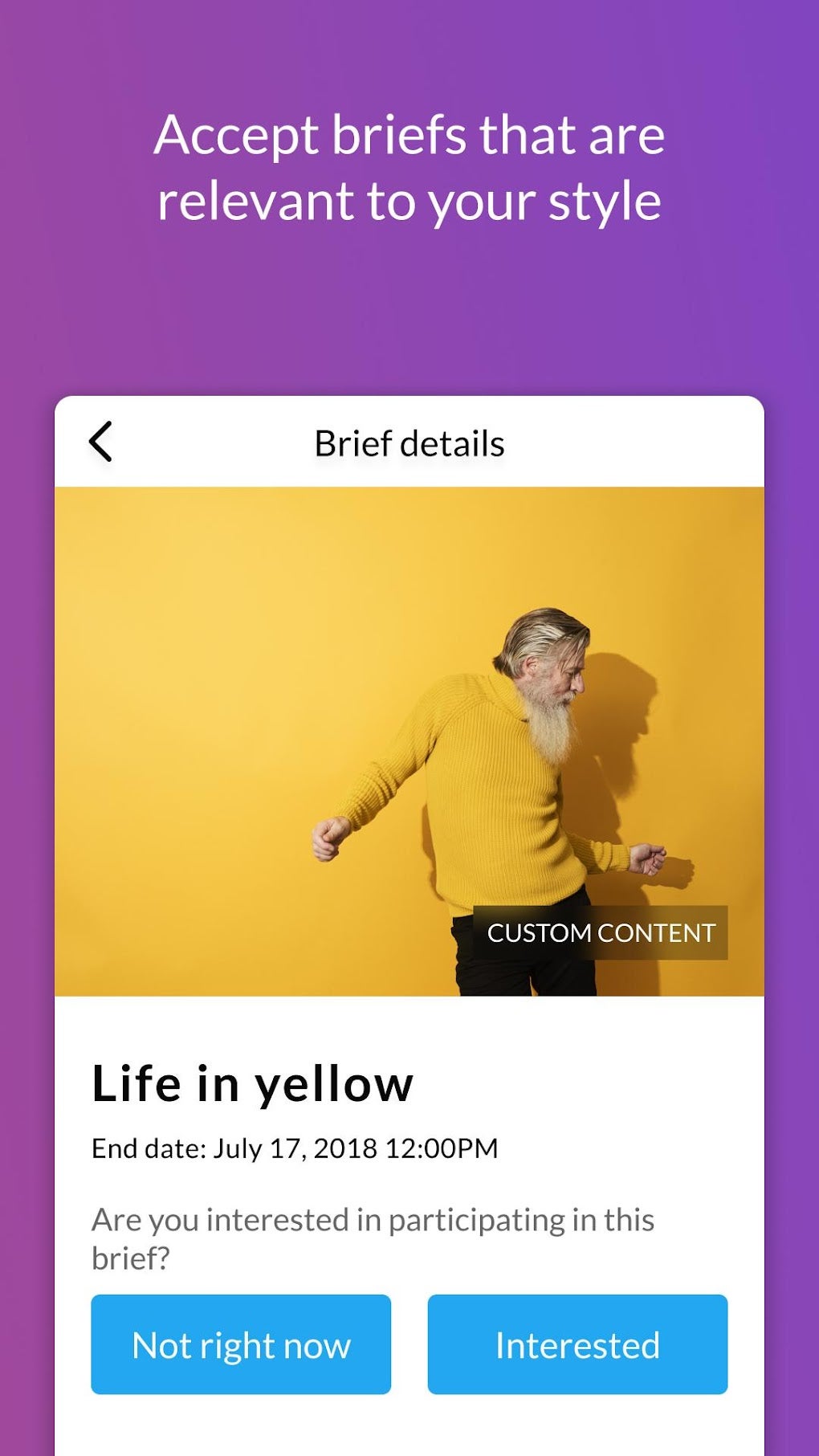If you're considering becoming a contributor to Getty Images, it's important to first grasp what the platform is all about. Getty Images is a leading visual content platform that provides millions of high-quality images, videos, and music tracks to a wide range of audiences, including businesses, media outlets, and individuals. It’s a marketplace where creativity meets commerce, and understanding its dynamics is the first step to successful contributions.
Getty Images operates on a licensing model, which means that customers pay to use the content you create. This approach allows artists, photographers, and videographers to monetize their work effectively. Here are a few key aspects to understand:
- Types of Media: Getty Images hosts a diverse array of content types, including stock photography, editorial images, illustrations, and video footage. Knowing what type of media you want to contribute to is essential.
- Quality Standards: Getty Images is known for its high standards. They seek high-resolution images and videos that tell a story, capture emotion, or provide unique perspectives. Consistently delivering quality work is key to your success as a contributor.
- Copyright and Licensing: Familiarize yourself with different types of licensing agreements. Getty offers various licenses for their products, such as royalty-free and rights-managed. Understanding these terms can help you better navigate what to expect from your contributions.
- Marketplace Competition: With thousands of contributors, standing out is crucial. It means producing unique content that meets trending demands and listening to the market's nuances.
By comprehensively understanding Getty Images and how it operates, you can tailor your contributions to better align with their marketplace demands, increasing your chances of being accepted and sold. This knowledge not only empowers you as a contributor but also enhances the value of your own work in a competitive landscape.
Getting Started as a Contributor

Now that you have a foundational understanding of Getty Images, it’s time to take actionable steps to become a contributor. Getting started is fairly straightforward, but there are several key steps and best practices that can optimize your experience and success.
1. Application Process: The first step is to apply to become a contributor. You can do this directly on the Getty Images website. You’ll need to fill out an application that may require information about your background, skills, and the type of content you produce. Ensure your application is clear and showcases your creativity.
2. Create a Portfolio: If you haven’t already, start building a portfolio that highlights your best work. Select high-quality images or videos that showcase your unique style. A well-organized portfolio can significantly enhance your chances of acceptance. Remember, only include your strongest pieces.
3. Understand Submission Guidelines: Getty Images has specific guidelines regarding the type of content they accept. Familiarize yourself with these guidelines, which often include restrictions on content (like avoiding identifiable people unless you have model releases). Pay attention to technical specifications, like file formats and resolution, to ensure your submissions meet their standards.
4. Stay Updated on Trends: The visual content marketplace is always evolving. To increase your attractiveness as a contributor, keep an eye on trends, popular themes, and seasonal demands. Following Getty’s blog or social media can provide valuable insights into what customers are currently looking for.
5. Use Tags Wisely: When you upload your content, make sure to use relevant keywords and tags. This will help your images get discovered more easily by customers. Think like a buyer; what terms would they search for? The right keywords can make a huge difference in visibility.
6. Monitor and Adapt: Once you start submitting work, the journey doesn’t stop there. Regularly check your contributor account for feedback and sales data. This information is vital; it tells you what’s working and what isn’t. Be prepared to adapt your style or topics based on insights you gather from your performance.
Starting as a contributor to Getty Images can be an exciting venture that not only allows you to showcase your creativity but also opens up avenues for income. By following these steps and staying proactive, you’ll be well on your way to becoming a successful contributor in this vibrant marketplace.
Also Read This: How Much Can I Make on Getty Images? Understanding Potential Earnings as a Contributor
3. Creating High-Quality Images for Getty

Welcome to the exciting world of contributing to Getty Images! As a new contributor, your primary goal should be to create high-quality images that stand out in the competitive marketplace. High-quality images not only attract potential buyers but also establish your reputation as a reliable contributor. So what does it take to create those stunning shots? Let’s dive in!
Understand Your Audience
Before you even pick up your camera, think about who will be using your images. Getty Images serves a variety of clients, including advertisers, marketers, and designers, who are looking for visuals that fit different themes and purposes. Research current trends and analyze which types of images are doing well. This can give you insight into what to focus on.
Invest in Quality Equipment
While you don’t necessarily need the most expensive camera on the market, having a decent camera can significantly enhance the quality of your images. Look for cameras with good resolution, excellent lens options, and great low-light performance. Additionally, invest in accessories like good lighting, tripods, and editing software to improve the workflow.
Master the Basics of Photography
To produce high-quality images that meet professional standards, it's essential to master the basics of photography. Understand concepts like:
- Composition: Use the rule of thirds, leading lines, and framing to create visually appealing images.
- Lighting: Natural light is often best, but learning about artificial lighting can help you during less-than-ideal conditions.
- Focus and Depth of Field: Ensure subjects are sharp and consider how much blurriness you want in the background.
Post-Processing Matters
Once you’ve snapped your photos, it’s time to polish them up! Use photo editing software to adjust lighting, contrast, and colors. Remember, subtlety is key; aim for a natural look while enhancing the image quality. Always ensure that the final product aligns with Getty's submission guidelines regarding image quality and file specifications.
Diversity and Authenticity
With the rise of global content consumption, Getty Images has a strong demand for diverse and authentic imagery. Consider showcasing different cultures, lifestyles, and perspectives in your work. Authenticity resonates with buyers and helps your images stand out from the rest.
By focusing on creating high-quality images that adhere to these guidelines, you'll be on your way to becoming a sought-after contributor on Getty Images. Happy shooting!
Also Read This: Pros and Cons of Getty Images: Evaluating the Benefits and Limitations of the Stock Photography Platform
4. Navigating the Submission Process

Now that you have created a stunning collection of high-quality images, the next step is navigating the submission process to Getty Images. It may seem a bit overwhelming at first, but don’t worry! Here’s a straightforward guide to help you through.
1. Gather Your Images
Before you begin submitting, ensure you have a solid selection of images ready for upload. Typically, it’s best practice to start with around 10-15 images that showcase your range and style. Aim for diverse content that aligns with the types of images Getty is looking to purchase.
2. Create an Account
If you haven’t already, the first thing you'll need to do is create a contributor account on Getty Images. Simply visit their website and follow the prompts to sign up. Be sure to provide accurate information, as this will be your primary point of contact for future correspondence.
3. Read the Submission Guidelines
Before submitting your images, take some time to thoroughly read the submission guidelines provided by Getty. They have specific requirements regarding image resolution, formats, and metadata. Following their guidelines closely can improve your chances of acceptance.
4. Upload Your Images
Once you’re ready, it’s time to start the upload process. Use Getty’s image uploader, which is user-friendly. You can drag and drop images or select them from your files. Make sure each image meets the technical requirements laid out in their guidelines.
5. Add Metadata
After your images are uploaded, you’ll need to add metadata—this includes titles, descriptions, and keywords. This step is crucial, as it helps your images get discovered by potential buyers. Be descriptive but concise and include relevant keywords that accurately describe your images.
6. Wait for Review
Once you’ve submitted your images, there will be a waiting period as Getty reviews and assesses your submission. Pay attention to email notifications; they will inform you if your images have been accepted or if they require modifications. Be patient during this process; good things come to those who wait!
By carefully following these steps, you’ll be able to navigate the submission process smoothly. Remember, even if some images don’t get accepted immediately, use the feedback to improve for the future. Happy submitting!
Also Read This: GuÃa Completa para Contribuidores Nuevos en iStock
5. Tips for Maximizing Your Earnings

If you're looking to maximize your earnings as a contributor to Getty Images, you're in the right place! Here are some strategies to help you make the most of your contributions:
- Create High-Quality Content: The first step to earning more is to ensure your photos or videos are of exceptional quality. Invest in good equipment and pay attention to lighting, composition, and subject matter. High-quality submissions attract more buyers.
- Stay Current with Trends: Trending subjects can significantly impact your sales. Keep an eye on current events, popular culture, and seasonal themes. Create content that aligns with what buyers are looking for at any given time.
- Diversify Your Portfolio: Don't limit yourself to one type of content. Explore various genres, such as lifestyle, nature, business, and even abstract. A diverse portfolio can appeal to a broader audience, increasing your chances of sales.
- Use Relevant Keywords: When uploading your images, make sure to use relevant keywords and tags. Think from the buyers' perspective—what terms would they use to find your content? Effective keywords can enhance visibility and drive more sales.
- Promote Your Work: Don’t just rely on Getty Images to bring in traffic. Share your work on social media platforms, personal blogs, and photography forums. Engaging with communities can lead to increased interest and sales.
- Participate in Challenges: Getty Images often runs contributor challenges. These can be a great opportunity to showcase your work, make your images stand out, and potentially earn additional rewards.
- Stay Consistent: Regular uploads can keep your portfolio fresh and ensure you’re always in the view of potential buyers. Aim for a consistent uploading schedule to keep your work relevant.
By following these tips, you can boost your earnings and become a successful contributor on Getty Images. Remember, it’s a journey! Take your time, learn from your experiences, and continually refine your skills.
Also Read This: How to Get Getty Images for Free Without Watermarks: Legal Methods
6. Understanding Licensing and Rights
When you contribute to Getty Images, understanding licensing and rights is essential for both you and your buyers. Here’s a breakdown to help you navigate this crucial aspect:
Getty Images primarily operates on two types of licenses:
| License Type | Description |
|---|---|
| Royalty-Free (RF) | Allows buyers to use your images without having to pay royalties each time they use the content. Buyers can use the images in various projects but cannot resell them as standalone items. |
| Rights-Managed (RM) | License that gives buyers specific rights to use your images for defined purposes, locations, and time periods. This allows contributors to earn more per sale, but it requires careful management of usage rights. |
Here are a few key points you should understand about licensing:
- Your Rights: As a contributor, you retain specific rights to your work. Ensure you understand what rights you are granting Getty Images and how they can use your images.
- Usage Information: Know how buyers will use your images. Each license type has different restrictions, so clarify any usage details with Getty to protect your interests.
- Model and Property Releases: If your images feature identifiable people or private property, you'll need to obtain appropriate releases. This is crucial for RM licenses but also beneficial for RF to avoid legal issues.
- Stay Informed: Licensing terms could change, so always stay updated with Getty Images’ contributor guidelines. Understanding the latest policies will protect your rights and your income.
In summary, a clear understanding of licensing and rights will help ensure you’re managing your contributions effectively and getting the most value from your work!
Also Read This: How Do You Know If Images Are Copyrighted and How to Use Them Legally
7. Promoting Your Work on Getty Images
Congratulations on becoming a contributor to Getty Images! This is an exciting journey, and one of the most critical aspects is promoting your work effectively. After all, creating stunning content is just the beginning; you need to ensure that potential buyers see it too. Here’s how to get your work noticed:
- Leverage Social Media: Use platforms like Instagram, Facebook, and Twitter to showcase your work. Share links to your Getty Images portfolio, engage with your audience, and use relevant hashtags to attract new eyes.
- Join Photography Communities: Connect with other photographers and creators online. Platforms like Reddit, photography forums, and Facebook groups can be valuable for sharing your work and getting feedback.
- Create a Personal Website: A personal website acts as a portfolio where you can display not just your Getty Images contributions but also other projects. Make sure it’s visually appealing and easy to navigate!
- Network with Other Contributors: Collaborate with other Getty contributors. This can help you reach a larger audience and create unique content that appeals to both your follower bases.
- Utilize Email Marketing: If you have an email list, share updates about your new uploads on Getty Images. Offer exclusive content or behind-the-scenes insights to keep your audience engaged.
- Participate in Contests and Challenges: Getty often hosts challenges and contests. Participating not only improves your visibility but may also offer rewards that can enhance your portfolio.
Remember, promoting your work is not just about shouting into the void; it’s about creating genuine connections and showcasing your unique voice in the crowded world of stock photography. Build relationships with your audience and other creatives, and your efforts will pay off!
Also Read This: How to Make Money from Getty Images and Build a Successful Photography Business
8. Common Mistakes to Avoid as a New Contributor
Diving into the world of stock photography can be thrilling, but there are a few pitfalls that new contributors often fall into. Avoiding these common mistakes can save you time and ensure you’re on the right track:
- Ignoring Metadata: Metadata is crucial for discoverability. Don’t skip adding keywords, titles, and descriptions. Use specific and relevant keywords that accurately reflect the content. This can significantly boost your visibility!
- Overlooking Image Quality: Always submit high-resolution images. Low-quality images may get rejected, which can be disappointing and waste time. Make sure your edits are polished and professional.
- Neglecting Trends: Stay informed about current trends in stock photography. What’s popular today might not be tomorrow. Follow industry blogs and observe what types of images are trending on Getty.
- Not Reviewing Licensing Agreements: Make sure you understand Getty Images' licensing agreements. Knowing the differences between rights-managed and royalty-free can enhance your strategy for uploading work.
- Submitting Too Many Similar Images: While it’s great to have a variety, don’t overwhelm your portfolio with images that are too similar. Focus on quality over quantity, showcasing a diverse range of subjects and styles.
- Forgetting to Keep Learning: The stock photography landscape is always evolving. Keep honing your craft, trying new techniques, and seeking feedback from peers. Continuous improvement is key to success!
Avoiding these pitfalls means you'll be setting a solid foundation for your journey as a Getty Contributor. Mistakes are natural, but learning from them quickly will put you ahead in the game! Embrace the process, enjoy your creative journey, and watch your contributions flourish over time.
Conclusion: Taking the Next Steps in Your Contribution Journey
Congratulations on embarking on your journey as a contributor to Getty Images! As you move forward, it's important to keep a few key points in mind to maximize your success and impact.
Next Steps:
- Regularly Upload New Content: Aim to upload fresh and diverse images that align with current trends. This will keep your portfolio dynamic and appealing.
- Engage with the Community: Join forums and social media groups related to Getty Images. Networking with other contributors can provide insights and support.
- Stay Updated: Follow Getty Images' updates and guidelines. Familiarity with their evolving standards and market needs is crucial.
- Optimize Your Metadata: Ensure your images are searchable by utilizing effective keywords and descriptions. This enhances your visibility on the platform.
- Seek Feedback: Don’t hesitate to ask for critiques from peers or through community channels. Constructive feedback can refine your skills.
Resources for Further Learning:
In conclusion, your contribution journey with Getty Images is just beginning. By following these steps and embracing a mindset of continual growth and learning, you can carve out a successful niche and make a meaningful impact in the world of visual storytelling.
 admin
admin








